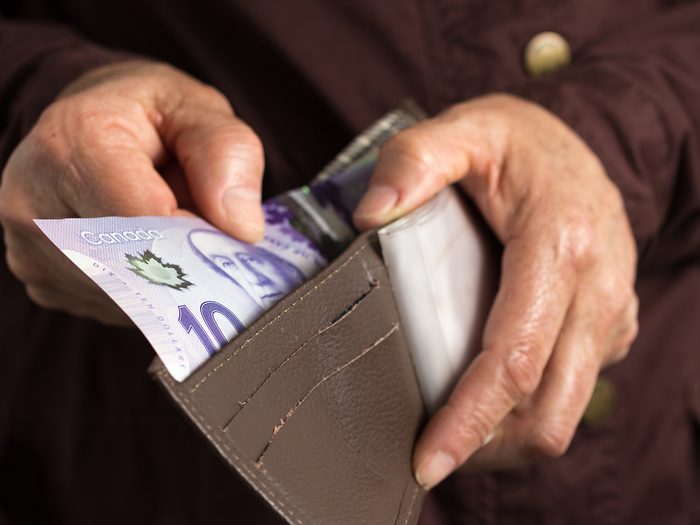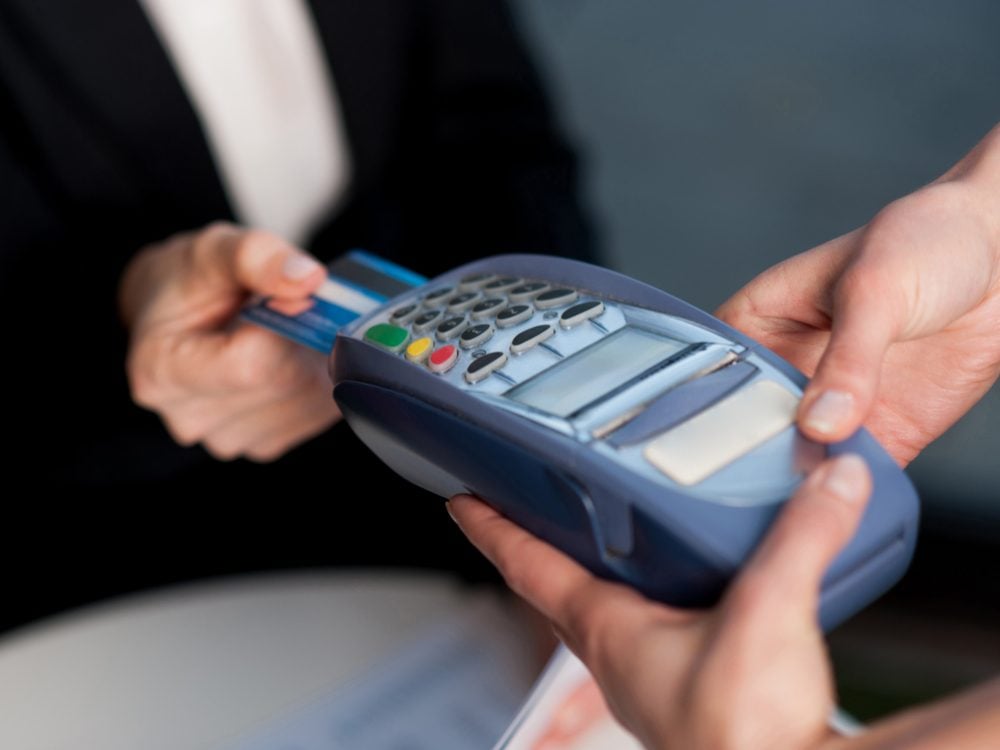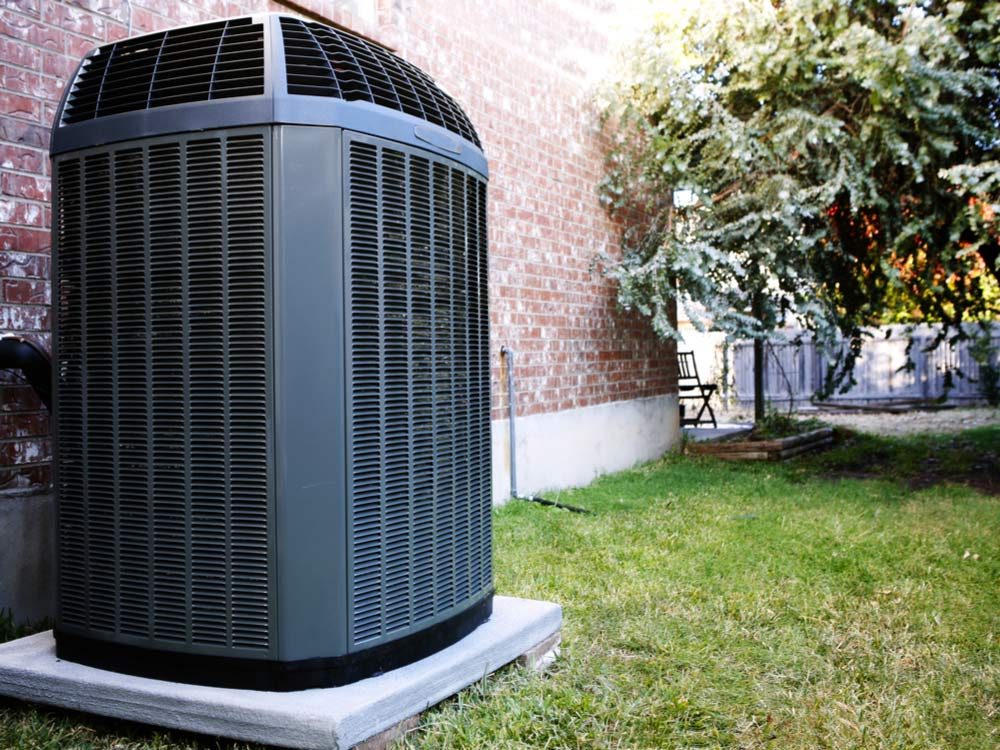
Over time, these money mistakes add up
Discussing money with our loved ones is awkward at best—and intimidating and nerve-wracking at worst. At the Credit Counselling Society, my team and I teach people how to manage their money, debt, and credit so they can feel safe, secure and financially in-control. What we find is that typically, it’s not one big ticket item that breaks a budget, but rather, “death by a thousand cuts,” as the saying goes. The bright side is that these simple money mistakes often have simple solutions.

Using credit instead of cash
Having room on a credit card isn’t always a good thing: research shows that we spend more freely when using credit cards instead of cash. If you have the ability to buy “that extra something,” your impulse spending risk goes up; if you have a points or cash-back credit card, you’re even more likely to spend to get the extra points.
The solution: Leave your card credit card at home and withdraw cash for shopping—especially for groceries.
Find out the best apps to save money on groceries.

Making only minimum payments on your credit card
Making minimum-only payments is a financial No Man’s Land. Case in point, if you have a credit card with a balance of $5,000 and an interest rate of 19.9%, you’re required to pay two percent as a minimum payment on a declining balance—think $100 on the first month, $99 on the second month, and so on. At that rate, it will take you about 65 years—and more than $22,000 in interest!—to pay off your credit card. If you take that same scenario and upgrade to a fixed payment of $125 per month, you’ll be debt-free in just over five years (assuming you’re not reusing the card). Of course, you’ll still pay $3,274 in interest, but your future-self will thank you for the saved time and money.
The solution: Do your best to put your credit products away. If you absolutely must use credit, be sure to make higher-than-minimum payments.
Find out how shrinkflation is affecting your grocery bill—and what you can do about it.

Purchasing a brand new car
That new car smell is inviting, but the costs associated with it can sour your purchase. Plus, your car depreciates in value the moment you drive it off the lot—statistics range from a 10 to 20 percent drop within the first year.
The solution: If you’re in need of a vehicle, consider buying a reliable used vehicle. You’ll save on the value and your monthly payments will likely be lower.
Here’s expert advice on what to check before buying a used car.

Ignoring low-interest credit products
Some interest rates on various credit products can be anywhere between 25 to 40 percent, and payday loan interest rates, when annualized, can be over 400 percent.
The solution: If you can, consolidate your debt into a product with lower interest rates. If you can’t, consider your local non-profit credit counselling agency for more options.
Discover more secrets financial advisers want you to know.

Having expensive hobbies
There’s nothing wrong with a round of golf or a dance class for couples, but it’s important to consider the whole cost of your recreational activities. Factors like registration fees, equipment and transportation tend to add up quickly.
The solution: Consider activities that are in line with your budget and look for ways to save some money. For instance, if you love golf, try buying used equipment.
Find out how to buy less (but still feel like you have enough).

Buying coffee-to-go every day
A daily cup of coffee on your way to work can cost you $10-$50 per week. Multiply this by 52 weeks in a year and that cost shoots up to $520-$2,600. And remember: that figure doesn’t even include the coffees you may purchase during your lunch breaks or on weekends.
The solution: Purchase a travel mug, make your coffee at home and consider fancying up that cup of joe by adding vanilla or cinnamon. If you absolutely must have that store-bought coffee, buy yourself a coffee card and stick to an allowance of $25 per month.

Going out for lunch at work
If you eat out for lunch twice a week, it will likely cost you anywhere between $30-$50 per week. If you add this up over the year, it can cost you anywhere from $1,500-$2,600. Yikes!
The solution: Pack your lunch to work and treat yourself monthly to a lunch out with the team. You can even try giving your family and yourself a cash allowance for eating out every month. Once the cash has been used up, it’s dinners at home until next month.
These make-ahead lunch recipes are a great place to start.

Disregarding a weekly meal plan
We’ve all been there: you’re at the supermarket with your grocery list in hand and think to yourself, “Wait, do I already have this item in my pantry?” You purchase the product anyway, and lo and behold, it was sitting in your kitchen the entire time.
The solution: Create a weekly or bi-weekly meal plan after checking your freezer, pantry and fridge for items you might already have. Apps like Flipp also allow you to shop the flyers, compare prices and price match. And of course, only buy what’s on your list.
Check out this cost-conscious seven-day meal plan that starts with canned food.

Overusing utilities
The solutions:
- Use appliances on off-peak times
- Make sure your doors and windows are properly sealed
- Get a programmable thermostat
- Consider equal payment plans to make budgeting easier
- Cancelling your cable or landline if you’re streaming content or only using your smartphone
This energy-saving guide can help keep your utility bills under control.

Shopping without thinking
Impulse spending can wreak havoc on both your budget and your emotions—those “good vibes” from your purchase very quickly turn to feelings of guilt and shame.
The solution: Figure out what triggers you using the TEMPO acronym—T: time; E: environment; M: mood; P: place; O: occasion—and find alternatives to spending money. In the meantime, consider leaving your credit and debit cards at home when you’re out and give yourself a guilt-free allowance.
Want to regain control of your spending habits—and your emotional well-being? Put these mindful shopping tips into practice.

Throwing big birthday parties
The solution: Have simpler parties, implement a “no gifts” policy or set a limit on the amount of money spent on presents (the latter is a great way to teach your children about budgeting early on).
Here are 10 finance podcasts worth adding to your playlist.

Buying gifts for every special occasion and holiday
You may want to shower your friends and family with lavish celebrations, but your monthly credit card statement can take the shine out of any special occasion.
The solution: Find out what occasions are most important to you and your family, and scope out a budget that works. Once you know your budget, divide that amount by the number of paydays you have and transfer that amount every payday to a savings account.
Hitting up the yard sales this summer? Learn how to haggle like a pro.

Not putting money away for irregular expenditures
Car repairs, dentist appointments, haircuts, work clothes—it’s easy to forget about these expenditures, which means they’re an easy excuse to use your credit card.
The solution: Add up all of the irregular and seasonal expenses that you experience in a year. If you’re not sure, download an interactive budgeting tool at My Money Coach. Once you have your annual total, divide by the number of paydays you have in a year and every payday, transfer that set amount into a specific savings account for these items.
Here are 12 things you’re not claiming on your taxes—but should be.

Taking more than one vacation
Vacations are a wonderful way to recharge your batteries, spend time with your family and discover new places, people and cultures. There’s a time and place to use your credit, but unfortunately, vacations don’t count.
The solution: Set out a SMART goal—specific, measurable, achievable, realistic and timed—and put money aside every payday in order to achieve your vacation goal.
These budget travel tips will also come in handy.

Owning your home
Home ownership is part of the Canadian Dream, but the cost of furnishing and running one might not align with your current financial reality. If your home is simply too expensive for you to maintain, you may need to make a different decision.
The solutions:
- Create a realistic budget
- Look for ways to increase your income (e.g. part-time work, tenant or a roommate)
- Decrease your expenses
- Downsize into more affordable accommodations
Now that you’ve got solutions for these common money mistakes, check out 50 ways to save more money in 2023.